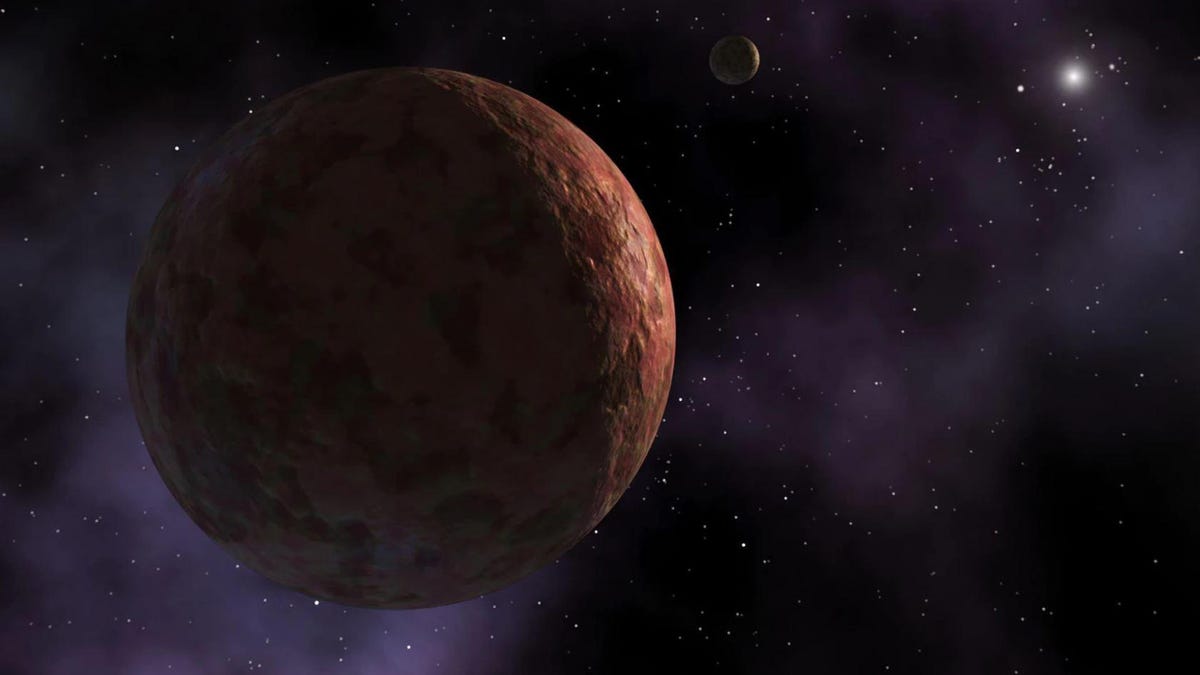'Planet 9' might really be a gang of asteroids shooting comets at us
A theorized hidden planet screwing with the orbit of distant dwarf planets may really be smaller, more mischievous bits of space debris with a possible link to dinosaurs.

The mysterious dwarf planet Sedna, discovered in 2003.
At the edge of the solar system, small dwarf planets like Sedna move in strange ways that suggest an unseen ninth planet may be lurking in deep space beyond Neptune, asserting its gravitational pull.
But new research offers a different explanation: The collective gravity of smaller bits of space debris like asteroids might be responsible for the behavior of so-called "detached objects" like Sedna, which can seem disconnected from the rest of our solar system as they orbit the sun.
Remarkably, these relatively insignificant objects may also be culpable in the extinction of the dinosaurs.
"There could be thousands of these (smaller) bodies out there waiting to be detected," said Jacob Fleisig, a University of Colorado at Boulder undergraduate in astrophysics who presented the new research Monday here at the American Astronomical Society meeting in Denver.
Fleisig and other researchers used computer simulations to find that these small, icy objects orbit the sun at a quicker clip than bigger ones like Sedna.
"You see a pileup of the orbits of smaller objects to one side of the sun," Fleisig said. "These orbits crash into the bigger body, and what happens is those interactions will change its orbit from an oval shape to a more circular shape."
This means Sedna's orbit can transition from being relatively normal to appearing to be detached from our solar system because of a multitude of interactions with the gravity of smaller bodies.
These groupings of distant asteroids and other small objects could also interact with comets lurking out on the chilled edges of our solar system, tightening and widening their orbits over and over again. This cycle could be responsible for shooting comets in our direction every 30 million years or so and might even explain the large space rock that's believed to have ushered dinosaurs off the evolutionary stage.
"While we're not able to say that this pattern killed the dinosaurs," Fleisig said, "it's tantalizing."
If gangs of far-flung asteroids are launching showers of comets in our direction, it's worth checking into, as the researchers say we could be targeted on a predictable timescale. That's a pattern we certainly want to learn about as much as we can to avoid the fate of stubby-armed T. rex and pals.
Crowd Control: A crowdsourced science fiction novel written by CNET readers.
Solving for XX: The tech industry seeks to overcome outdated ideas about "women in tech."

